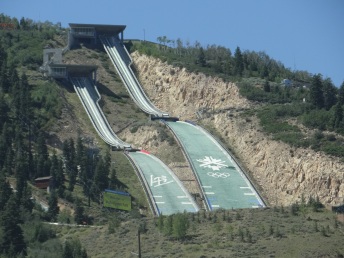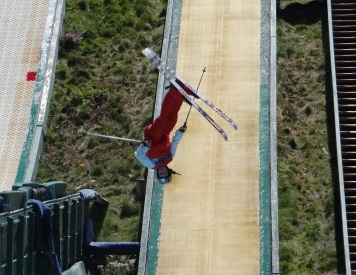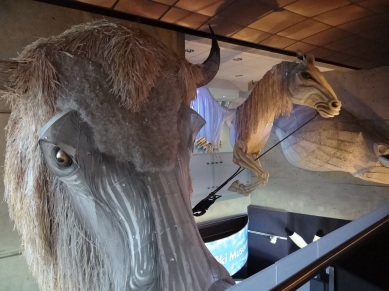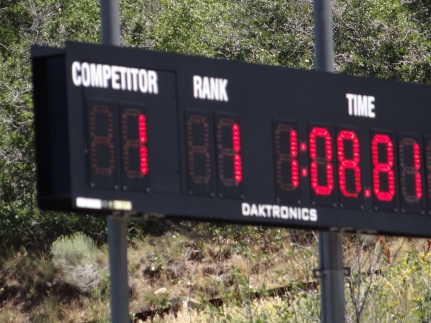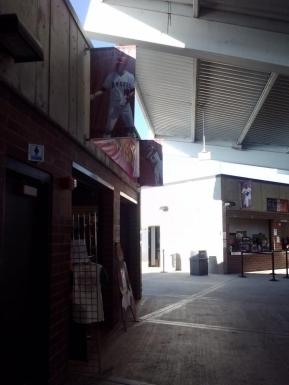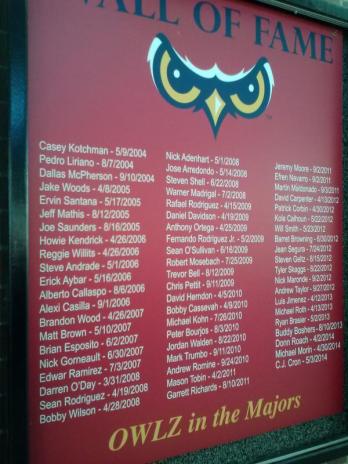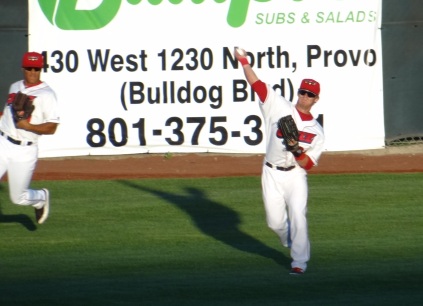It’s that time of year minor league baseball fans. It’s time for Moniker Madness aka a yearly competition Minor League Baseball holds to recognize players with unique names. The competition was started in 2007 and voting for the 2014 competition will wrap up on Thursday. (To see this year’s list of players and vote for your favorites, click here.) I’ve had the privilege of working with some players with unique names. I present to you the names and memories of perhaps some of the most uniquely named players I have worked with over the past four years.
1. Jason Jester- I met Jason during my very first season as a sports reporter. He was on the baseball team at Tyler Junior College and I was on the college newspaper staff. I learned a lot during that season working with the coaches and players to write stories about the team. It was cool seeing him pitch in a national championship game at TJC and then seeing him go on to pitch at Texas A&M and set records as their closer. But for me, the best memory I have is interviewing Jason after he was drafted by the San Diego Padres. He’s now pitching in Low-A ball with the Fort Wayne Tincaps and I wish him all the best in the future.
2. Jurickson Profar- During the 2012 season, I was an intern with the Frisco RoughRiders, the Texas Rangers Double-A team which is where I worked with Jurickson Profar. I have quite a few funny stories about him but my favorite one involves the RoughRiders charity golf tournament. I was in charge of getting a picture of every golf group with sponsor signs as they pass through the first hole. Profar’s group was the last one to come through. I got the photo and started to head back to the golf clubhouse. Profar stopped me and asked if I would putt for him on the green since it was their last hole. I said alright not realizing they only had right-handed clubs and I’m left-handed. It did not go too well but it eventually made it to the final destination although I’m sure Tiger Woods would not be proud of how far I went over par on that hole. We got into the golf cart to head back to the clubhouse and Profar wanted to drive. Never have I been so scared in my life. We went down a hill with his foot all the way on the gas pedal. I thought we were going to flip the cart and then the thought ran through my mind that what would we say to Jon Daniels and Nolan Ryan if he had gotten hurt? Luckily, we made it back safe and sound to finish the tournament without a hitch.
3. Mike Olt- Working for the RoughRiders is also where I met Mike Olt who is now playing in the Chicago Cubs organization. The very first time I met him was also one of my favorite memories from the season. The graphic designer Alex and I set up a photo shoot with Mike where we set his bat on fire. We were originally going to do the shoot outside but it was extremely windy and we didn’t want to set the stadium on fire so we ended up doing it in the player’s tunnel. Mike brought an old batting practice bat and we put layers of rubber cement on it before lighting it up. We asked him to swing the bat slowly so he wouldn’t toss little bits of fire all over the tunnel. It resulted in some awesome pictures. The operations guys had fun with it too tossing a flaming baseball back and forth.
4. Narciso Crook- Due to my school schedule and graduation ceremonies, I wasn’t able to get on with a team for the 2013 season so I worked for our local newspaper and covered the National Junior College Athletic Association Division III Baseball World Series tournament which is where I met Narciso. He was playing for Gloucester County Community College and was an absolute beast for them hitting a few homers and finishing one game with a hit short of the cycle. Gloucester won the national title and Crook was named the MVP. I interviewed him after the game and he couldn’t have been more humble about his contributions to the team during the tournament. The Cincinnati Reds sure took notice and drafted him that season. He currently plays for the AZL Reds.
5. Brooks Pounders- This season I am interning with the Idaho Falls Chukars. Brooks Pounders was sent to us on a rehab assignment and he was super funny. I get headshots of all of the new guys for the video boards. We were in the dugout and I took the first shot which he wasn’t happy with so we took a second headshot. He didn’t like the second one so we kept going and it turned into an impromptu photo shoot. He joked that he should start modling but finally after about 10 shots, we got the right one for the video boards. Of course, he has been called back up to the Wilmington Blue Rocks and is currently in first place for MiLB’s 2014 Moniker Madness tournament so go vote!

